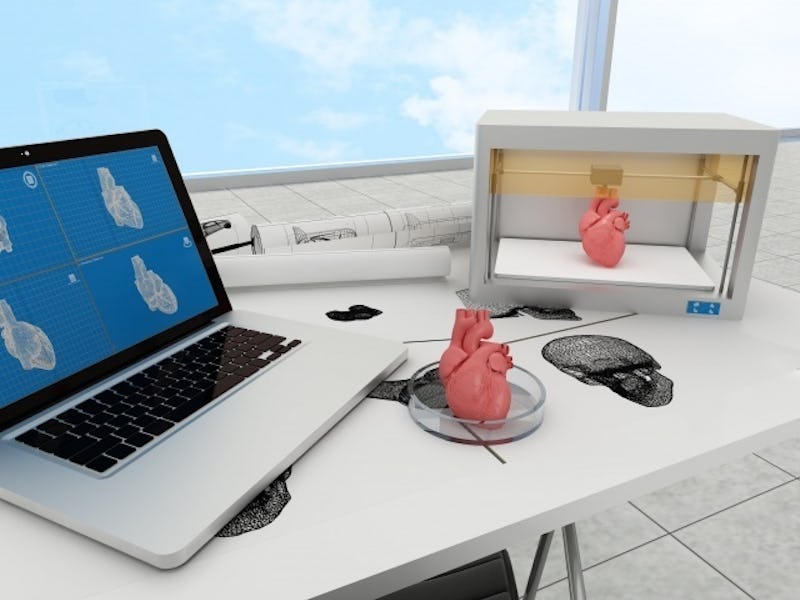People in the future might walk around with manufactured organs that work just like the real things. Getting to that point requires quite a bit of work, though, and a new “biotINK” made by researchers at the Technical University of Munich could allow more scientists to tackle this problem and help bring a future with 3D-printed human organs closer to reality.
Printing human tissue currently requires special equipment, and existing bio-inks aren’t strong enough to create stable structures on their own. TUM’s researchers combined biotin (vitamin B7) and a protein called streptavidin to “create a kind of molecular superglue” that can be used to make printing “three-dimensional intercellular contacts and physiological microenvironments” both cheaper and more affordable. (The biotin inspired the researchers to dub their project “biotINK.”)
This new bio-ink can be used in popular 3D-printers with some light modifications that TUM’s team said “any lab around the world” can make on their own. This significantly reduces the upfront cost of working on 3D-printed organs and could encourage more people to study the issue.
3D-printing has many uses, from building houses to making boardgames, but the creation of human organs could have the biggest impact on the most people if these plans come to fruition.
U.S. Government Information on Organ Donation and Transplantation says that 30,970 transplants were made in 2015; another 119,000 people are on the national waiting list right now. Building organs instead of relying on harvesting them could help save those many thousands of people.
These manufactured organs, much like the organs-on-chips made by other researchers, could also help advance medical studies by reducing their dependency on living subjects. This would give a better glimpse into how human tissue responds to certain diseases, drugs, and other factors that can be difficult to study today.
“Apart from the more medically orientated aspects of regenerative medicine and pharmacology, cellular systems are also of great interest for basic and applied research,” TUM’s researchers said. “While much on the molecular interactions within cells is known, comparatively little is known about the complex interactions of cells with each other.”
TUM’s team presented its work at the International Genetically Engineered Machine 2016 Giant Jamboree in Boston on October 29. Inverse reached out to the team to learn more about their plans for the future and will update this post if they respond.
